Hello! 😊 This blog is dedicated to my own rambling/theories about movies and other media. Leave a comment if I managed to intrigue you!✨
Don't wanna be here? Send us removal request.
Text
Betelgeuse and Astrid "Death" Parallel
I'm not sure what else to call this observation/rambling, but I've been thinking a lot about the events of Beetlejuice Beetlejuice, and on my most recent viewing, I noticed something super satisfying about this scene. You know, other than the obvious.
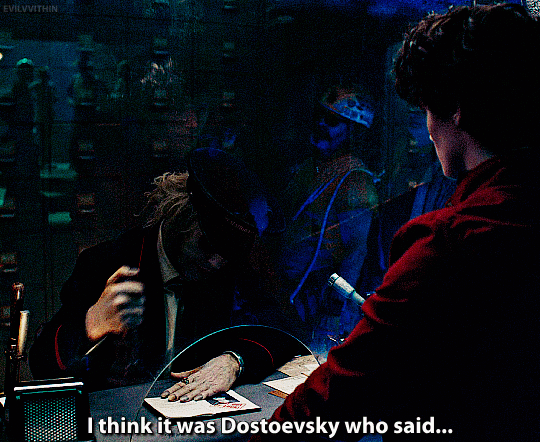
We all know Beej is not one to turn down a deal, least of all when it involves his own self-interest. And of course, it's very advantageous for him to rescue the daughter of the woman whose heart he's trying desperately to win. But there's another delicious layer to him being the one to personally dispose of Jeremy Fraizer...
Betelgeuse knows exactly what it's like to be manipulated by love, only to then have your life taken from you.
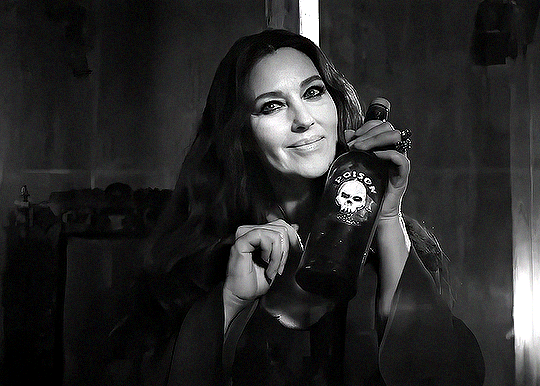
Delores manipulated him under the guise of love to steal his life (and his soul) to gain immortality, the same way that Jeremy pretended to care for Astrid so that he could ultimately take her life for his own.

It's think pretty accurate to assume that neither Delores nor Jeremy felt anything genuine for their victims. They were a means to an end. But where Betelgeuse had to defend himself on his own, unable to reverse what had been done, Astrid was not alone. While she was preoccupied with running from the afterlife authorities, reuniting with her father, and getting some much-needed family closure, there was someone else looking out for her.
Enter our anti-hero.
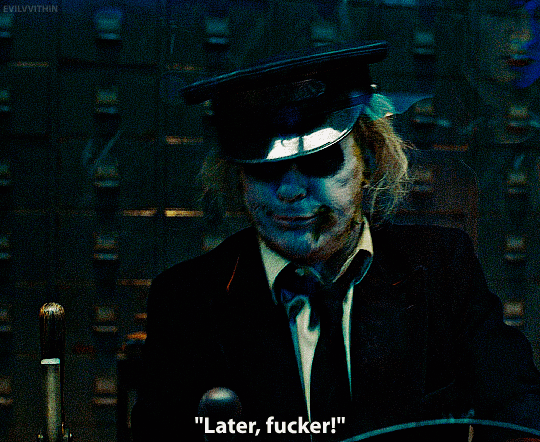
We don't get any direct insight into Beej's thoughts on the Jeremy situation, but it probably struck a nerve for him. He would never admit it, but how could it not? We already know he's privy to Rory's manipulation of Lydia and is eager to expose him, but this is not about a toxic, gold-digging relationship. This is literally life and death. It follows that he would be just as if not more upset to learn that a murderous wolf in sheep's clothing was trying to kill Lydia's daughter, especially given the nature of his own death.
(I mean c'mon, he used his one PG-13 ordained f-bomb on the guy. I think it's safe to say he felt pretty strongly about Jeremy's villainy.)
We all know how it plays out in the end, but I think it's rather poetic that Beej is able to avenge his 'would-be stepdaughter' and save her from a devious scheme very similar to the one that he fell prey to.
He couldn't get his own life back from Delores (though arguably he does, at least metaphorically, in the finale), but he was able to give Astrid back hers.

So there you have it. Now that I see the parallels, it's ten times more vindicating that Betelgeuse was the one that got to send that slimeball to hell. And let's be honest: Beej would probably agree.
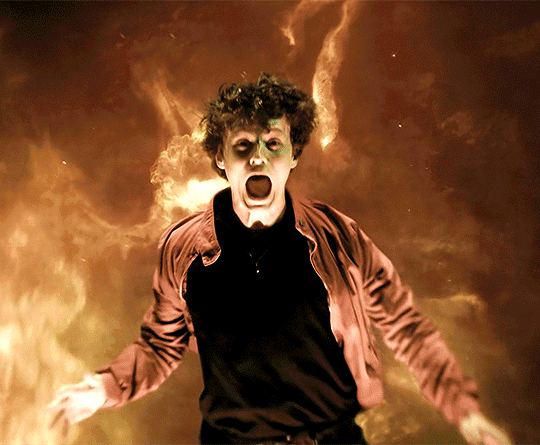
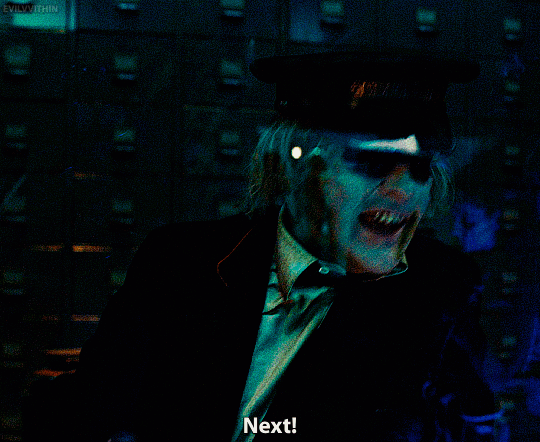
370 notes
·
View notes
Text
Theory About Baby Beetlejuice 🍼👶🧷🩸
Warning: This post contains SPOILERS for ‘Beetlejuice Beetlejuice’ (2024) and many speculations.
A few months ago, Tim Burton introduced some new additions to the Beetlejuice universe: one of the new characters is a bizarre, monster infant, officially named 'Baby Beetlejuice'. He definitely made a shocking first impression around the world.

He is supposed to be nothing more than an illusion, a twisted joke conjured by Beetlejuice. In this article, the birthing scene is explained as a tribute to Geena Davis' performance in 'The Fly' (1986). Additionally, this fellow theorist's post (moonsceptre) pointed out that Baby Beetlejuice looks and acts very similarly to the monster baby in the film 'It's Alive!' (1974). So, all things considered, it would be easy to dismiss the demon baby as a quirky little easter egg and nothing more.
Yet... the same baby reappears in Lydia’s dreams at the very end of the movie. Usually, recurring elements in filmmaking are called motif, and may serve several purposes to the storytelling. This raises a question: does Baby Beetlejuice actually represent something more?
I’m not sure! But let’s dive in and see if we can make sense of it all. ✨
First, a recap. During its first appearance, Lydia ‘gives birth’ to Baby Beetlejuice after a magical, immaculate pregnancy that lasts about 15 seconds. The ‘father’ takes one quick look at the baby and unceremoniously kicks him across the room. As if that wasn’t crazy enough, Baby Beetlejuice immediately crawls back to Lydia and latches onto her legs, biting her thighs repeatedly as she desperately tries to shake him off.
Then, Baby Beetlejuice appears again in a dream - a dimension linked to the subconscious mind. This time, he’s born in a hospital, and his mother is Astrid, Lydia’s daughter. The little devil immediately starts killing the nurses, biting them to death. He even crawls onto the ceiling to chase and eat a fly. Finally, he plops onto Astrid’s lap, already calling her ‘mama.’
What can be the meaning behind all this?
My short Answer: Lydia's anxiety and hopes for a mysterious future.
Long Answer: In 'The Fly', Veronica witnesses her partner slowly change both physically and mentally - in an alarming, mysterious way. Later on, as she learn that she's pregnant with his baby, she has a nightmare about giving birth to a monstrous creature.
In a similar way, I believe that Baby Beetlejuice may embodies all the anxiety and negativity that Lydia associates with the ability to see and communicate with ghosts - a gift she unintentionally passed on to her daughter. A gift that can potentially destroy both of their lives. This is why Lydia tried so hard to keep Astrid safe and distant from her spirit work, for as long as she could. However, at the end of Beetlejuice 2 she realizes she can’t protect Astrid anymore, because ghosts are naturally drawn to those with the gift. Therefore, Lydia wishes for a better life for her daughter... and for herself as well.
This theory is supported by some dream decoder's websites, as well as this weirdly specific article:
Apparently, different dream experts agree that “dreaming about giving birth to a monster” is quite common and often has nothing to do with actually having a baby.
(although it can sometimes be associated with the actual fear of childbirth/being pregnant/becoming a mother, sometimes referred to as 'tokophobia')
In dreams, this scenario often reflects fears about the outcome of a situation, decision or project, and even the desire to explore an alternative way of life. The monster itself typically embodies change, worries, and repressed feelings, but also the possibility of new beginnings. In real life, it can be interpreted as a useful and even positive vision.
...but hey, that's just a theory! A Beetlejuice theory! Until next time, have a fantastic week! ✨
#beetlejuice#betelgeuse#tim burton#beetlejuice movie#lydia deetz#winona ryder#keatlejuice#film theory#micheal keaton#film analysis#film stills#cinema#film#movie#beetlebabes#dark#vintage#grunge#creepy#beetlejuice 2#beetlejuice sequel#beetlejuice beetlejuice#tw pregnancy#tokophobia
29 notes
·
View notes
Text
Beetlejuice's Backstory and the Black Plague 💚🕷️🥀💀 PART 3

Good evening! As promised, here’s Part 3 of my series on Beetlejuice’s past and movieverse. Today, we dive deeper into historical fashion, analyzing the outfits of Beetlejuice and Delores to uncover their personal stories.
If you missed the earlier parts, check out PART 1 and PART 2.
Warning: This post contains SPOILERS for ‘Beetlejuice Beetlejuice’ (2024)... and many, MANY speculations.
Quick recap: In Part 1, we discussed the Plague. In Part 2, we delved into Beetlejuice’s past, questioning the claim that he died over 600 years ago.
I wondered: is that really true? Why does his clothing reflect the Baroque style, then?
That's right! In Part 3, I confirm my previous point: there are several clues suggesting that Beetlejuice most likely lived during the Baroque era - a cultural movement that began in Rome at the end of the 16th century and faded around 1750. Here is the list of the clues I noticed:
The lace neckband around BJ's neck.
His three-piece wedding suit.
Delores off-the-shoulder neckline and puffed sleeves.
The bird masks used by Delores and the undertakers.
AliveBeetlejuice first outfit (when he's stealing from corpses): specifically, the pirate shirt and the type of shoes.
Keep in mind that most of these elements were revolutionary novelties of the 16th-17th century. Here is proof for every. single. one of them.
The Lace Cravat

A behind the scenes still of Michael Keaton in 'Beetlejuice Beetlejuice' vs. the portrait of Jacob de Witte, Lord of Haamstede (Netherlands). The artwork was made by Jan Mijtens in 1660.
The first cravat, the predecessor of modern neckties and bow ties, originated in France during Louis XIV’s reign as a political and fashion statement. (Although the early idea comes from the Ancient Roman focale, used around 200 CE). The King was inspired by a particularly eye-catching necktie wore by Croatian mercenaries as part of their uniform. The new article of clothing quickly became a fashion staple for high-ranking men across Europe.
In its use, it represented the evolution of the common handkerchief, already popular in the 1500s as a practical tool, a flirty decoration, and a status symbol. I believe the variant Beetlejuice is wearing in the picture is called ‘jabot,’ and is one of the older, simpler versions.
Lace, often used in cravats, highlighted the wearer’s wealth. Italian lace, especially from Venice, was highly sought after by the European elite since the 15th century, when ruffs and collars were in vogue.
This detail suggests two possibilities:
Beetlejuice might have been an impoverished aristocrat (or a rich merchant) clinging to his title until the end. This could also explain the ring on his index finger, symbolizing power or family ties. Or both.

Alternatively, he may have been someone who strongly wished to be part of the elite.
Jacket and Breeches

Aristocratic fashion, 1630 (Victoria & Albert collection) vs. What Beetlejuice wore in the wedding scene.
Another standout innovation of the Baroque period was the introduction of the three-piece men’s suit, known as the ‘Habit à la française.’
This ensemble included a tailcoat (a calf-length jacket), a coat (a long waistcoat), and knee-length breeches. Like the cravat, this fashion was adopted across Europe. As you can see, Beetlejuice is perfectly embodying this fashion, which evolved and remained popular until the 19th century. Interestingly, one shoe is missing.
Pirate Shirt
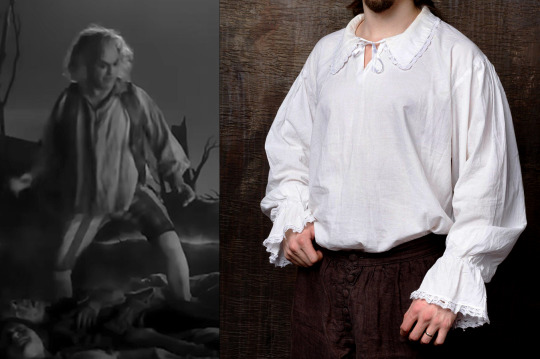
Originating in the 16th-17th century, the ‘poet shirt’ or ‘poet blouse’ remained popular through the Romantic era. These multi-purpose shirts served as both underwear and nightwear, featuring long tails that reached mid-thigh or knee. The body and sleeves were gathered at the collar and cuffs, creating a full, loose fit.
Delores' Outfit

For comparison, I’ve included an illustration of noblewomen’s fashion at the court of Louis XIII (died 1643). His successor, Louis XIV, made France a cultural and fashion beacon for the next two centuries.
In the movie, Delores wears two nearly identical outfits: long dresses with puffed sleeves ending just below the elbow, a corset, and an off-the-shoulder neckline. This style aligns with 17th-century trends when fashion became more comfortable and relaxed.
The black color suits her character’s personality and role in the film, possibly hinting at a connection to the late Renaissance and the Spanish Court.


In fact, during the reign of Charles V (1500-1558) and his son Philip II (1527-1598), Spanish aristocracy particularly favored the black color, as it represented austerity and power for both men and women. Additionally, a deep shade of black was particularly difficult to achieve with the dyeing methods of the time, making those fabrics quite expensive to make.
However, The Spanish style was quite the opposite to what France later proposed: it consisted in a severe and somber luxury, which increased in opulence as the time passed. As Spain happened to be the beacon of fashion before Louis XIV came along, it's only natural that black rapidly became quite popular all around Europe as well. The color was particularly appreciated by the members of the middle class in Protestant nations and, apparently, in Italy as well.
Finally, keep in mind that 'Delores' is a variant of the more common 'Dolores'. Both names have Spanish origins and means 'sorrows'.
So what do we think? Was Beetlejuice from a rich family? Was Delores a Spanish witch?
Who knows! But I’m willing to dream and speculate!
Until the big reveal from Tim Burton himself in the now teased but not confirmed yet sequel, have a fantastic week!✨
#beetlejuice movie#tim burton#michael keaton#film theory#film analysis#film stills#cinema#film#movie#beetlejuice#betelgeuse#beetlejuice sequel#beetlejuice beetlejuice#europe#italy#beetlebabes#italian#dark#plaguecore#baroque#17th century#history#renaissance#historical fashion#delores#beetlejuice 2024#black plague#beetlejuice 2#beetlejuice & lydia
77 notes
·
View notes
Text
Yes, this is real!
There was also a post asking fans what they'd like to see in a third film. Go tell him!
This post was on Twitter/X

251 notes
·
View notes
Text
Beetlejuice's Backstory and the Black Plague 💚🕷️🥀💀 PART 2
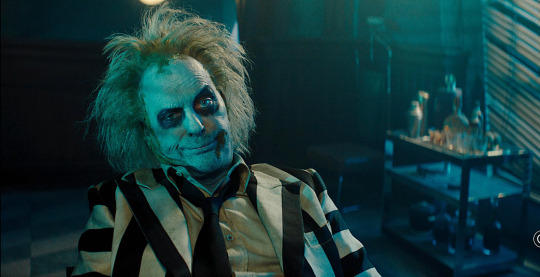
Hello, hellooo! I’m thrilled that so many of you enjoyed my previous post! 🎊 This is the second part of a series dedicated to the Black Plague era, BJ’s past life, and other movieverse theories.
If you missed it, here is PART 1.
Warning: This post contains SPOILERS for Beetlejuice Beetlejuice (2024) and many, MANY speculations.
In the previous segment, I analyzed various pieces of evidence and concluded that Beetlejuice was:
definitely a plague survivor.
possibly a monatto by profession (though this is still debatable).
most likely Italian, living in Italy during one of the historically significant outbreaks in European history.
However, we still haven’t addressed the million-euro question: Which plague outbreak did he live through when he was alive? And the reason I avoided this question until now is that it’s basically impossible to tell for now. Here’s why:
Reason number 1. The two most notable outbreaks in Italian history occurred in 1350 and 1630. However, after the first incident, the disease reappeared in smaller epidemics every few years across Europe. Additionally, upon rechecking my sources, I discovered three more significant outbreaks:
in 1658, mainly affecting Naples.
in 1749, confined to Sicily and Calabria.
the very last one, in 1815, affecting the Bari area (Noicattaro)
After these outbreaks, the disease seemingly disappeared from Italy for good, which is great news but leaves us with many possibilities.
Reason number 2. In both movies, Beetlejuice has repeatedly proven to be an unreliable narrator. This means we can’t take his origin story at face value.
For instance, his claim of being over 600 years old completely contrasts with the clothes he and Delores are wearing in the backstory sequence. That style of fashion is typical of the Baroque period, which flourished from the early 17th century until the 1750s.

To keep it brief: Beetlejuice’s neckband, his three-piece suit, and Delores’ outfit visually suggest that the backstory is likely set in the 17th century and definitely did not occur before the 16th century.
On top of that, consider that Tim Burton navigated various historical periods throughout his filmography: think about Sleepy Hollow, Sweeney Todd, Alice in Wonderland, Big Eyes, and Miss Peregrine’s Home for Peculiar Children. I believe that it’s unlikely that historical inaccuracies were unintentional.
For context, here is what Beetlejuice and Delores would wear if their story was actually set in the Middle Ages, around the 1300s-1400s:


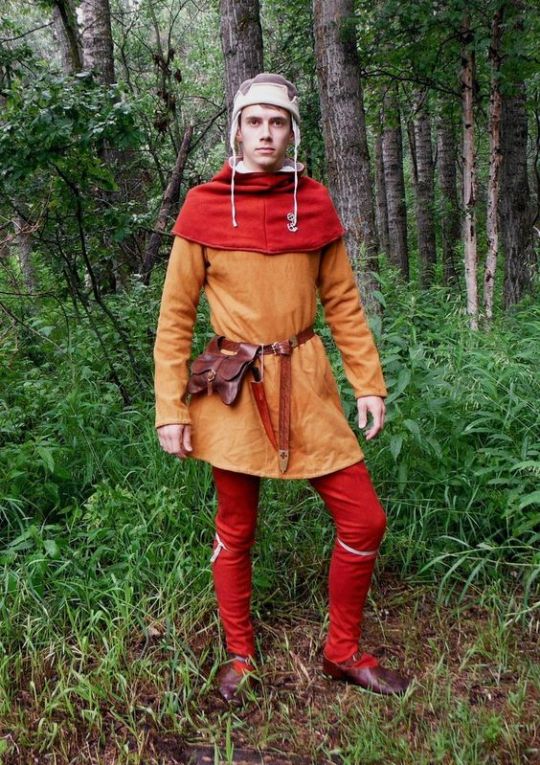
…not quite the same impression they give during the backstory, is it? And lace cravats were invented in the 1660s. This fact alone is significant because:
It would suggest that Beetlejuice is actually 'younger' that what he stated: Personally, I believe he might be around 300-400 years old. However, this is just an approximation, and I might be wrong.
It would imply that the backstory he narrated and showed us might be a lie (partially or entirely).
Or… perhaps he lied earlier about being 600 years old, but the backstory is the actual truth? Maybe he never learned to count properly… who knows?
My point is that there’s no way to discern what is true and what isn’t. All I can do is analyze what I see with my own eyes, hoping to find some answers. And yes, this means that, in PART 3, I’m going to delve into historical fashion, in unnecessary detail.
But that’s fine, I enjoy making sacrifices for this team. 😀
Until then, have a fantastic week! ✨
#beetlejuice movie#tim burton#michael keaton#film theory#film analysis#film stills#cinema#film#movie#beetlejuice#betelgeuse#beetlejuice sequel#keatonjuice#beetlejuice 2#beetlejuice beetlejuice#europe#italy#heritage#plague doctor#italian#historical novel#dark#vintage#grunge#plaguecore#black plague#baroque#beetlejuice & lydia#beetlebabes#history
117 notes
·
View notes
Text
Beetlejuice's Backstory and the Black Plague 💚🕷️🥀💀 PART 1

I went and watched the new Beetlejuice movie twice already, can’t wait to share my thoughts! I’ve decided to make a series of posts mainly dedicated to people that are curious about the Black Plague era and BJ's past life. Join me for a historical dive that might make you appreciate Tim Burton’s work even more!
Warning: This post contains SPOILERS for the 2024 movie Beetlejuice Beetlejuice.
Premise
In European countries, we often study the Black Plague in schools. In Italy specifically, the disease spread multiple times throughout the Middle Ages, with the two worst pandemics occurring around 1350 and 1630. The first one alone spread in many countries and caused a total of 20 million deaths - a THIRD of the population of the whole European continent at the time.
However, the 1630 outbreak is the one we know about the most, thanks to author Alessandro Manzoni (1785-1873), who described it meticulously in his masterpiece, ‘I promessi sposi' (The Betrothed): This book is one of the most important works in Italian literature. Although it is a novel, it is often treated as historical evidence because Manzoni actually shaped the story referring to archival documents and chronicles of the time.
Introducing: Monatti, the corpse carriers
In his book, Manzoni recalls a group of people called 'monatti' - the only ones allowed to practice public services such as collecting the dead and washing roads during those hellish times. This concession was motivated by the fact that monatti were considered immune to the disease.
However, they were feared and hated by the rest of the population, because they often misused their ‘privileged’ position: they were untouchable. They often extorted money from the living and stole the belongings of the dead and the sick alike, without repercussions. What made them special was the fact that monatti typically gained immunity after surviving the disease themselves.

“Farewell to Cecilia,” one of the most heart-wrenching moments in Manzoni’s novel, beautifully captured by Francesco Gonin.
In fact, the Black Plague typically spread in three ways: through skin contact (bubonic plague), lungs (pneumonic plague) or blood infection (septicemic plague). The Bubonic form was, and still is, the most common and had the highest survival rate, though it was still quite low. It was easily identifiable because it caused the lymph nodes to swell and become infected, forming characteristic 'buboes'.
It was believed that if a plague victim survived five days, the fever would subside, and they would recover within two weeks. This is what usually happened to the monatti. Similarly, Renzo, the protagonist in Manzoni’s book, recovers, though he never becomes a public worker.
Now, let’s dive back into Beetlejuice’s backstory.

Amidst the eerie glow of moonlight, he's depicted among corpses, at night, behind a wagon, stealing from the dead that were just thrown into a communal pit by plague doctors.
Notice how he’s directly touching the bodies with his bare hands, without any protection: usually, that was considered a death sentence.
In Manzoni’s book, there is a character that meets their end in a similar way, simply by touching the clothes of an infected person. During that era, the danger was so great that people used to burn the bodies of the plague victims along with their clothes, beds, and other possessions.
It is also worth mentioning that, during plague outbreaks, some city governments (particularly in Italy and Poland) imposed strict limitations on the movement of people and goods. In some areas, a nighttime curfew was also enforced (Yes, we invented the lockdown centuries ago!). Under those circumstances, being caught outside your own house at the wrong hour could mean instant death. But guess who had the freedom to roam as they pleased? Yes, monatti and plague doctors (and those with special permits).
Conclusion: Beetlejuice wasn’t just 'a humble grave robber', as he claims. He was definitely a plague survivor and, most likely, a monatto.
The fact that this scene was unveiled and narrated in Italian during the Venice Film Festival further convinces me that this is the correct interpretation of the sequence.
So, what do we think? Have you ever heard or read about The Betrothed before? Anyways, if you liked this analysis, make sure to check out PART 2, in which we can delve even deeper into Beetlejuice’s mysterious past!
Until then, have a fantastic week! ✨
#beetlejuice movie#tim burton#michael keaton#film theory#film analysis#film stills#cinema#film#movie#beetlejuice#betelgeuse#beetlejuice sequel#beetlejuice beetlejuice#europe#italy#heritage#plague doctor#beetlebabes#italian literature#alessandro manzoni#i promessi sposi#the betrothed#italian#historical novel#dark#grunge#plaguecore#black plague#keatonjuice#warner bros
209 notes
·
View notes
Text
About Death's Glare - Puss In Boots 2 (The Last Wish) ✨⚔️🐺🌟

In 2022, shortly after the film’s release, an unexpected wave of video essays flooded YouTube. Viewers were mesmerized by the enigmatic wolf that appeared in Puss in Boots’ new, epic adventure. There was a treasure trove of topics to explore about this character: symbolism, intriguing dialogues, cinematic composition.
Personally, I’ve always resonated with the perspective that Death is not really a villain, but rather a formidable antagonist; after all, no mortal can truly stand against the Grim Reaper.
I recently watched the film for the fourth time. It was just as spellbinding as the first, but this time, I noticed something that seems to have slipped under the radar (or maybe it didn’t, but I haven’t seen comments about it). Something hauntingly captivating about Death’s piercing stare.

First, a question: what makes it so terrifying? Well, it's an unyielding, burning stare that frequently locks onto the viewer, paired with a massive mouth full of pointy teeth.
Moreover, constricted pupils are often associated with rage and disgust.
It is definitely a nod to the informal English saying 'to give someone the Death stare/glare', which is defined by the Cambridge English Dictionary as 'an angry look that you give someone to show them that you are annoyed or want them to stop doing something'.
The wolf’s angry gaze is often fixed on Puss in Boots, and we know the reasons.
Now notice how the cat, being much smaller, should rarely meets his eyes at the same level...



However, despite the height difference between the two, the wolf is often centered in the frame, gazing directly into the camera positioned right in front of his face. What is the meaning behind this choice? Which point of view is being used to narrate those moments?



The answer: I believe that, throughout the movie, Death is repeatedly looking at us, the audience.
He transcends his role as a mere character in a film, because he is a constant in everyone’s life. In these scenes, the viewer becomes part of the narrative. Death judges us all, for surely everyone has, at some point, taken life for granted.
This concept strikes me as profoundly inspiring. ✨
#dreamworks animation#puss in boots the last wish#pibtlw#the last wish#pib the last wish#puss in boots death#puss in boots#film stills#cinema#film#movie#film theory#film thoughts#film analysis#antonio banderas#death the wolf#death#i realized something#animation#digital animation#el lobo de la muerte#muerte#dark
13 notes
·
View notes